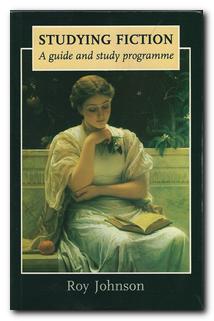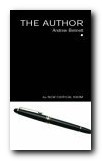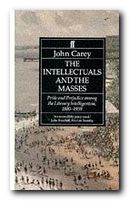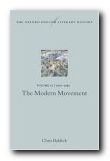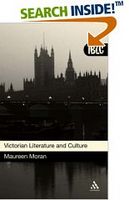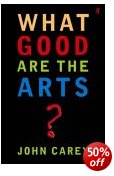new approaches to literary studies for post-graduates
Research Methods for English Studies is a collection of essays on the subject of research skills, methods, and methodology in the field of literary studies. The essays betray a profound unease which has (quite rightly) begun to infect this branch of academic activity. For they are in a sense answers to questions which are rarely if ever asked in this section of the humanities. Questions such as ‘What exactly is research in literary studies? What methods are used? What validity do the results have? Indeed, compared to other subjects such as biology, history, physics, astronomy, and sociology, what is literary studies about?
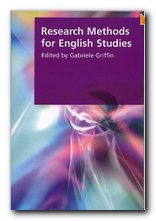 Some practitioners can answer these questions by taking fast hold of a vaguely related discipline and writing about the biography of an author, the genesis and publication history of a text, or the nature of its reception by the reading public. But the vast majority of what is called literary studies (and not just ‘English’) is nothing more than one person’s opinions about a text or a body opf work. Even worse, it may be opinions about opinions, or opinions about theories. There will be no declaration of critical method attached to works submitted for assessment or publication, no theory to be tested or conditions which can be reproduced – only a long bibliography of works consulted, packed out with the names and works of currently fashionable critics.
Some practitioners can answer these questions by taking fast hold of a vaguely related discipline and writing about the biography of an author, the genesis and publication history of a text, or the nature of its reception by the reading public. But the vast majority of what is called literary studies (and not just ‘English’) is nothing more than one person’s opinions about a text or a body opf work. Even worse, it may be opinions about opinions, or opinions about theories. There will be no declaration of critical method attached to works submitted for assessment or publication, no theory to be tested or conditions which can be reproduced – only a long bibliography of works consulted, packed out with the names and works of currently fashionable critics.
This is the state off affairs that has obtained for a long time in institutions of higher education, and in the prevailing climate it is likely to be coming to an end. These essays, whilst betraying unease, are also in a sense offering a lifeline to those who wish to find a niche for themselves in departments of literature or humanities. They are saying ‘Look! Here’s a new angle, so that you can retain tenure’.
Carolyn Steedman (a historian) for instance offers a chapter on the romance of working in archives, though she has no specific advice on what you might do when you get to it. Mary Evans promotes ‘auto/biography’ as a new approach – but this misses the fact that writing accounts of authors’ personal lives is a form of history, not literary studies. The activity of considering a number of biographies of Sylvia Plath amounts to not much more than a higher form of weekend supplement celebrity gossip, which says nothing about her poetry.
Next comes oral reminiscence. The argument here is that this enables a recovery of lost or forgotten history. All well and good, but there is no explanation of how this applies to literary studies. The example discussed merely compares the memories of a Home Guard volunteer with the accuracy or otherwise of Dad’s Army.
A chapter on visual methodologies carries with it similar problems. It is quite true that pictures can be analysed and interpreted, but since the vast majority of literary texts have no illustrations at all, it is difficult to to imagine how such an approach would help us to understand An Essay on Criticism or King Lear.
Discourse analysis looks more promising, because it focusses its attention on language, but an analysis of the opening sentence of Pride and Prejudice stretches for a whole page without mentioning the term irony, though it does have space to complain about the text’s ‘focus on heteronormativity’. But at least Gabrielle Griffin goes on to explain how computer programs can be used to analyse texts – an activity which might keep somebody in post via a research grant whilst legitimately claiming to be literary studies.
Ethnographic studies at first seems a possibility, but studies of how readers consume texts, why they choose one book rather than another, and what the significance of their activity might be – all are ultimately sociological questions or matters of private biography. They do not contribute to literary understanding or interpretation.
Catherine Belsey appears to be on much firmer ground with ‘textual analysis’. Indeed, she even offers a practical exercise to demonstrate its efficacy. But her exercise has problems right from the outset. First of all she analyses a painting (Titian’s Tarquin and Lucretia) and then she does nothing but raise questions about its meaning, based on nothing more than you could gain from a few minutes in front of the object, with an encyclopedia or Google search open by your side.
With much invoking of Roland Barthes, she argues that meanings in a text are ‘ultimately undecidable’, which she sees as good news for researchers, because it will keep them in business for ever. This is an admission of intellectual bankruptcy that today’s crop of post-graduates would do well to treat with extreme caution when applying for grants funded by tax-payers’ money.
There’s a whole chapter on interviewing authors (more celebrity gossip) and even creative writing as ‘research’ before the collection ends with the most sensible chapter of all – the use of computational technology as an aid to research. This includes the digitisation of primary sources, computer-aided textual analysis, the creation of electronic texts, and the establishment of multi-featured hypertext editions. All of these approaches are of use to other scholars, and they tend to be free of the ‘Look at me’ attitudes which infest much of what passes for contemporary criticism. It’s significant that this chapter has by far the largest and most useful supplement of suggested further reading and follow-up web sites.
So – this rabbit is finally pulled out of the hat at the very end – but anyone following the general advice in this book should be warned. In the current economic climate many of these self-indulgent approaches to ‘research’ are likely to be doomed. Some of the contributors to this volume are likely to be listed for early retirement by the time you come to read what they have written.
© Roy Johnson 2010
Gabrielle Griffin (ed), Research Methods for English Studies Edinburgh: Edinburgh University Press, 2009, pp.248, ISBN: 0748621555
More on literature
More on the novella
More on literary studies
More on short stories

